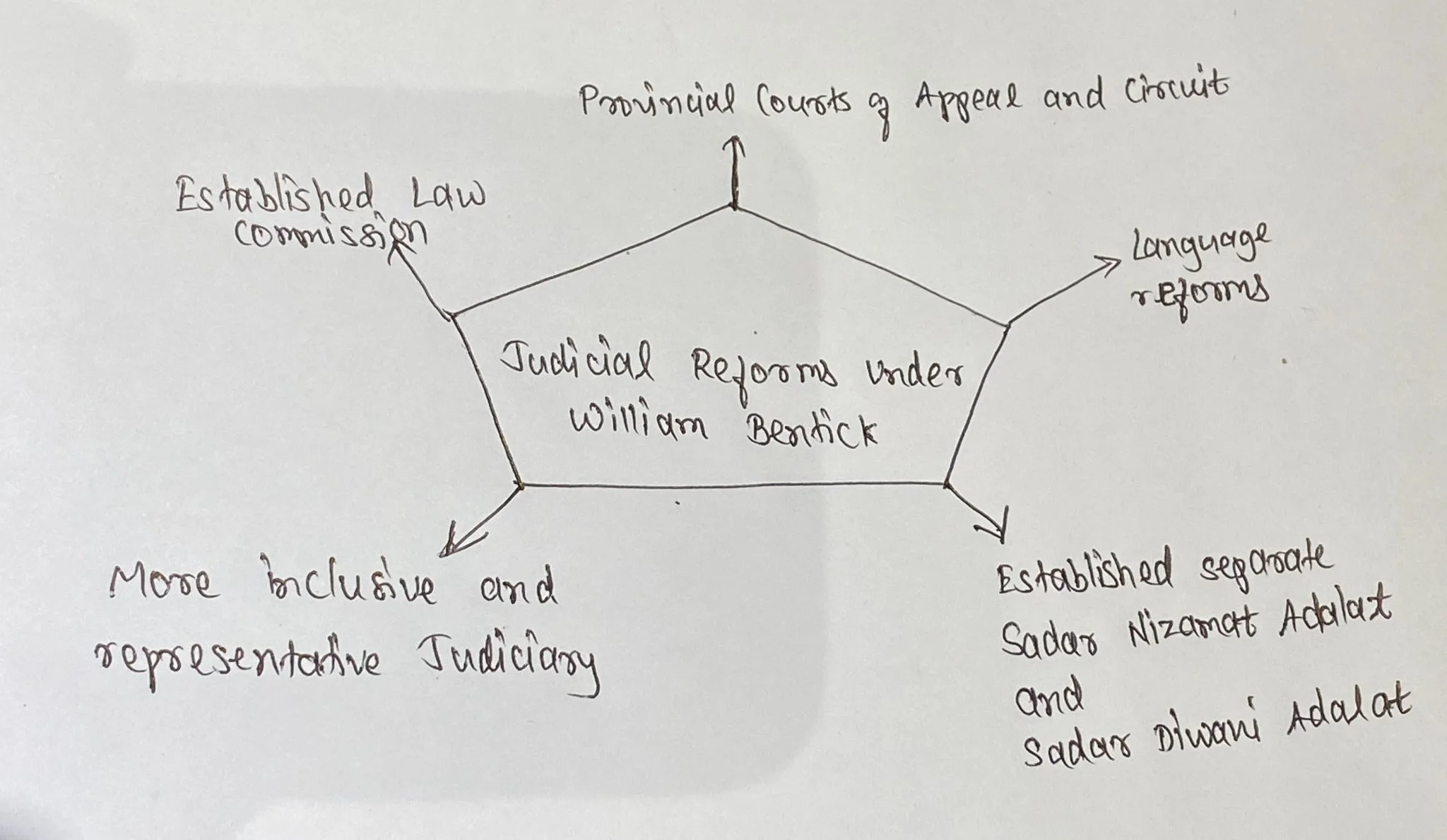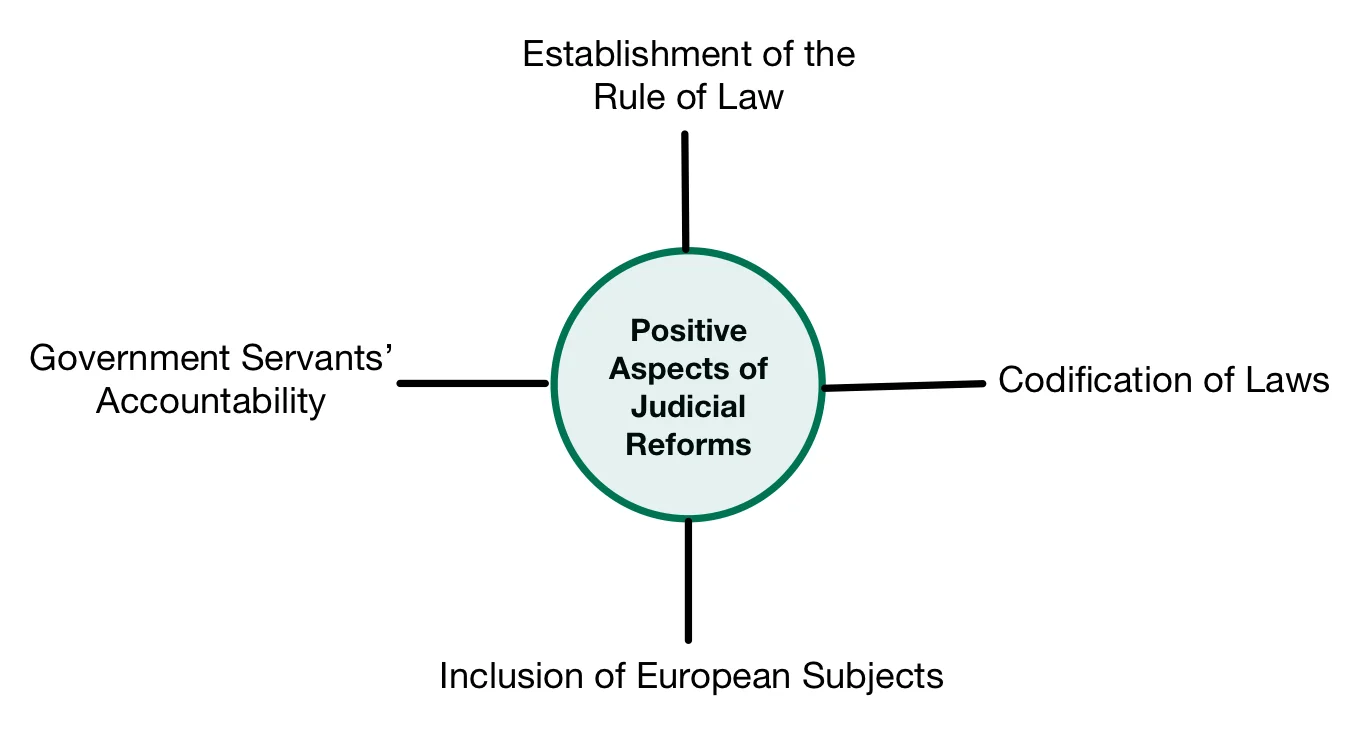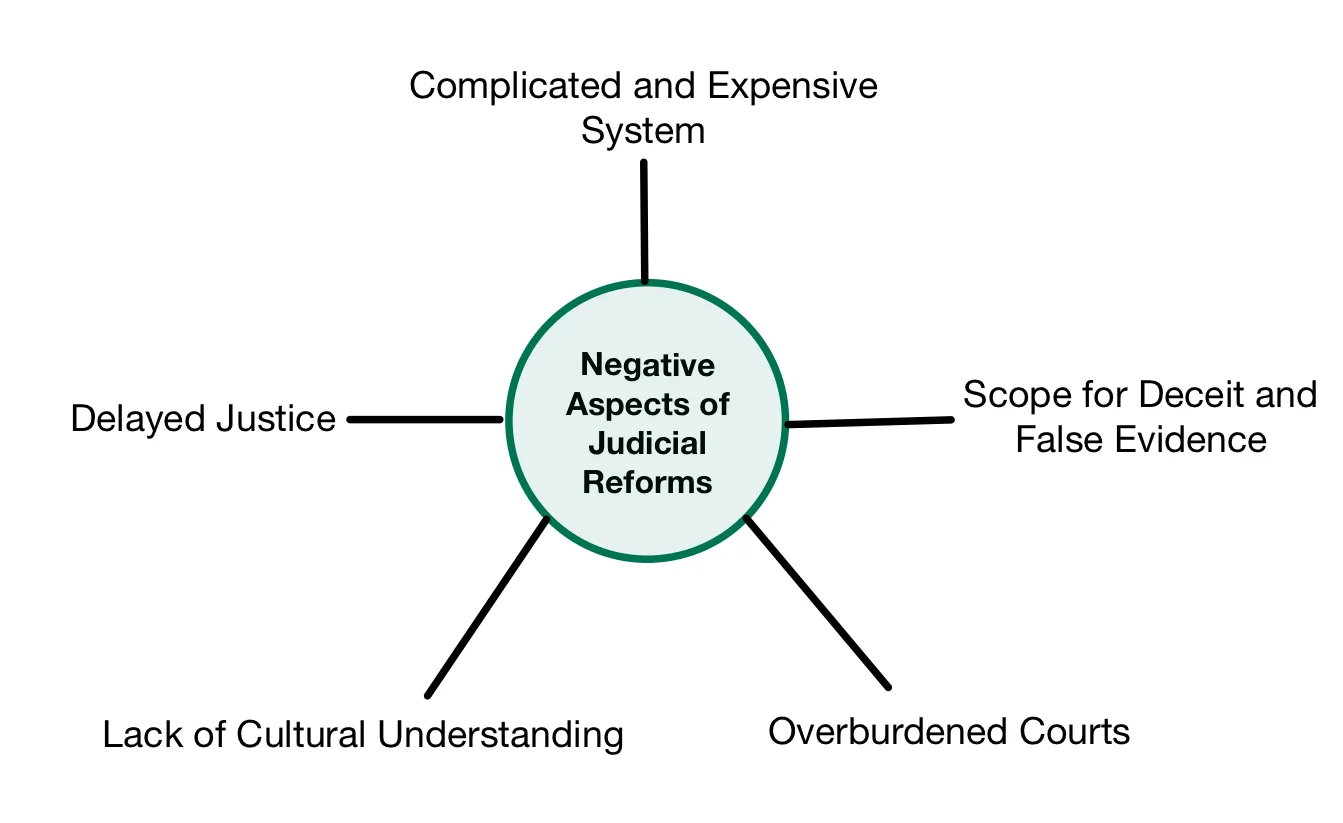The post-Cornwallis era marked a transformative period in British India’s governance, with William Bentinck’s tenure as Governor-General (1828-1833) playing a key role in introducing judicial reforms. Bentinck sought to address inefficiencies in the legal system, initially set by Cornwallis while promoting accessibility, fairness, and inclusion. His reforms, though progressive, reflected the complexities of British rule, blending advancements in governance with the challenges of maintaining colonial authority. This analysis explores Bentinck’s judicial reforms and their lasting impact on India’s legal framework.
Judicial Reforms under William Bentinck (1828-1833)
William Cavendish Bentinck assumed the position of Governor-General of India in July 1828, succeeding Lord Amherst. His career had begun as an Ensign in the army, but he quickly rose through the ranks, achieving the position of Lieutenant Colonel.
- He was also a Member of Parliament from 1796 and had a distinguished military career, notably fighting against the forces of Revolutionary and Napoleonic France in Northern Italy.
- He was known for his Whig principles, aligned with the ideals of the English ruling classes during the Era of Reform in England.
- During his command of English troops in Sicily in 1812, he encouraged the adoption of a constitutional government in Sicily, inspired by the English model.
- Bentinck’s military experience played a crucial role in his appointment as the Governor of Madras in 1803.
- He was tasked with countering potential French ambitions in the Deccan.
- However, his tenure in Madras faced controversy when some Madras regiments stationed at Vellore mutinied in 1806.
- The mutiny was related to orders forbidding the soldiers from using their caste marks or wearing earrings.
- While the Vellore Mutiny was eventually suppressed, the Court of Directors abruptly terminated Bentinck’s services.
Bentinck’s administration in India is often praised for its progressive reforms and efforts to improve the welfare of the governed.

Enroll now for UPSC Online Course
- Notable Reforms Under Bentinck: He brought about some notable actions and reforms including the Abolition of Sati and Infanticide, Suppression of Thugs, increased participation of Indians in subordinate services, Press Freedom, Educational Reforms, Judicial reforms, etc.
- Limited Liberalization and Political Liberty Extensions: While Bentinck is often praised for these reforms, it’s noted that his administration did not substantially liberalize the overall governance or extend political liberties to India.
- Authoritarian Continuity: The East India Company’s government remained largely authoritarian.
- As P.E. Roberts observed, the acclaim for Bentinck’s achievements represents more of his aspirations and the long-term impact of his policies rather than the radical changes realized during his tenure.
- Enhancing Efficiency and Accessibility in the System: Under the administration of William Bentinck, significant judicial reforms were introduced to address the shortcomings of the judicial system previously established by Cornwallis.
- These reforms aimed to streamline the system, enhance accessibility, and promote efficiency.
Some of the Key Reforms were as Follows
Commissioner of Revenue and Circuit: The Provincial Courts of Appeal and Circuit, initially set up by Cornwallis, were found to be overburdened with excessive duties, resulting in significant arrears of cases.
- To address this issue, Bentinck abolished these courts.
- Their responsibilities were transferred to magistrates and collectors, who now operated under the supervision of a Commissioner of Revenue and Circuit.
- This reorganization aimed to reduce the backlog of cases and expedite the legal process.
- Sadar Diwani Adalat and a Sadar Nizamat Adalat: To provide greater convenience for the public in the Upper Provinces (present-day Uttar Pradesh) and Delhi, Bentinck established a separate Sadar Nizamat Adalat (criminal appellate court) and Sadar Diwani Adalat (civil appellate court) in Allahabad.
-
- This move spared residents from having to travel long distances, often over a thousand miles, to file their appeals in Calcutta.
- Persian as the official language: Up until this point, Persian had been the primary court language. Bentinck introduced important language reforms to make the legal system more accessible to the local population.
- Suers were given the option to use either Persian or vernacular languages when filing their suits, which helped accommodate linguistic diversity.
- In higher courts, Persian was replaced by English as the official court language, aligning it with the changing linguistic landscape of the time.
- Munsiffs as junior judicial positions: To make the judiciary more inclusive and representative of the local population, qualified Indians were appointed to junior judicial positions, such as Munsiffs.
- They were allowed to advance in their careers and potentially reach the position of Sadr Amins, contributing to the diversification of the judicial workforce.
- Law Commission: In 1833, a Law Commission was established under the leadership of Thomas Macaulay. The primary objective of this commission was the codification of Indian laws.
- As a result of the commission’s work, several significant legal codes were prepared, including the Civil Procedure Code (1859), the Indian Penal Code (1860), and the Criminal Procedure Code (1861).
- These codes played a crucial role in standardizing and modernizing the legal system in India, providing a comprehensive legal framework for the country.
These reforms under William Bentinck aimed to improve the efficiency and accessibility of the judicial system, adapt to the linguistic needs of the population, and increase the participation of qualified Indians in judicial roles. These changes were significant in addressing some of the challenges faced by the previous judicial framework and reflected the evolving needs of the Indian society at the time.
Later Developments
The British introduction of the modern concept of the rule of law in India brought significant changes to the legal system and its application. Here’s an overview of the key aspects of the British legal system in India and its impact:
- Rule of Law: The British introduced the concept of the rule of law in India, ending arbitrary authority exercised by earlier rulers.
- This meant that individuals could understand their rights and privileges, and a defined procedure was established for asserting them.
- While instances of interference with individual rights did occur, the legal system provided a mechanism to bring officers guilty of breaching the law to court.
- Equality before Law: Under British rule, all individuals were considered equal in the eyes of the law, regardless of their religion, caste, or class.
- This marked the end of varying laws based on a person’s social or economic status. The humblest of individuals could seek legal recourse for their legitimate rights.
- However, in practice, this principle was often violated due to complex laws, the need for expensive lawyers, and corruption in the administrative and police systems.
- Recognition of Personal Civil Law: The British recognized the rights of different Indian communities, such as Hindus, Muslims, Parsis, or Christians, to be judged by the laws of their respective communities, especially in matters related to marriage, adoption, and family matters like succession and property partition.
- Growth of Trained Judicial Officers and Lawyers: The British legal system promoted the growth of trained judicial officers and professional lawyers.
- In contrast to pre-British times, when landlords and rulers played a prominent role in resolving disputes, the introduction of written and codified laws instilled confidence in the legal system.
- This led to the emergence of a professional class of lawyers who were trained to defend their clients’ rights.
The later developments in the evolution of the Indian legal system
- In 1860, a significant change was made, stipulating that Europeans in India could no longer claim special privileges, except in criminal cases.
- Additionally, no judge of Indian origin was allowed to preside over cases involving European individuals.
- In 1865, the Supreme Court and the Sadar Adalats were merged to create three High Courts in Calcutta, Bombay, and Madras.
- This consolidation aimed to streamline the judicial system.
- In 1935, the Government of India Act of 1935 introduced the establishment of a Federal Court in 1937.
- This Federal Court had the authority to resolve disputes between governments and hear limited appeals from the High Courts.
- This development marked an important step toward a more centralized and coordinated legal framework in India.
Evaluation Judicial System under the British
While the British colonial-era judiciary brought about some positive changes, such as codified laws and accountability, it also introduced complexities and delays, creating challenges in ensuring swift and accessible justice for all segments of society. This period of judiciary in India had both positive and negative aspects:
Positive Aspects
- Establishment of the Rule of Law: One of the most significant achievements was the establishment of the rule of law.
- This provided a more structured and consistent framework for legal proceedings.
- Codified Laws: The introduction of codified laws replaced the previous reliance on the religious and personal laws of rulers.
- This brought clarity and uniformity to the legal system.
- Inclusion of European Subjects: European subjects were brought under the jurisdiction of Indian courts, demonstrating a degree of equality before the law, although this was limited to criminal cases tried by European judges.
- Government Servants’ Accountability: Government officials were made answerable to civil courts for actions performed in their official capacity, promoting accountability.

Negative Aspects:
- Complicated and Expensive System: Over time, the judicial system became increasingly complex and expensive, making it less accessible to ordinary people.
- This complexity often favoured the wealthy who could navigate the system more effectively.
- Scope for Deceit and False Evidence: The intricate legal procedures sometimes provided ample opportunities for the submission of false evidence, deceit, and manipulation of the legal process.
- Delayed Justice: Prolonged and drawn-out litigation led to delayed justice, with cases taking years to resolve.
- This was a significant drawback of the system.
- Overburdened Courts: As litigation increased, the courts became overburdened, leading to further delays and inefficiencies in the legal process.
- Lack of Cultural Understanding: European judges, at times, lacked familiarity with Indian customs and traditions, which could result in judgments that did not fully appreciate the nuances of the local context.
- English judges, influenced by racial biases, sometimes exhibited partiality in disputes involving Indians, Europeans, and Anglo-Indians.

Enroll now for UPSC Online Course
| Must Read | |
| Current Affairs | Editorial Analysis |
| Upsc Notes | Upsc Blogs |
| NCERT Notes | Free Main Answer Writing |
Conclusion
In conclusion, William Bentinck’s judicial reforms in post-Cornwallis India represented a significant attempt to modernize and improve the legal system. His measures, including the creation of new courts and the promotion of linguistic inclusivity, aimed to address inefficiencies and enhance accessibility. While these reforms advanced legal practices and promoted fairness, they also reflected the complexities of British colonial rule, balancing progress with persistent challenges in governance and judicial equity. British legal system laid the groundwork for the evolution of the Indian legal system, serving the interests of the East India Company in areas such as land revenue collection and the maintenance of law and order.
Sign up for the PWOnlyIAS Online Course by Physics Wallah and start your journey to IAS success today!
| Related Articles | |
| High Courts in India | LAW COMMISSION OF INDIA |
| Economic Impact Of British Rule In India | Lord William Bentinck (1828-1835) |

 GS Foundation
GS Foundation Optional Course
Optional Course Combo Courses
Combo Courses Degree Program
Degree Program











